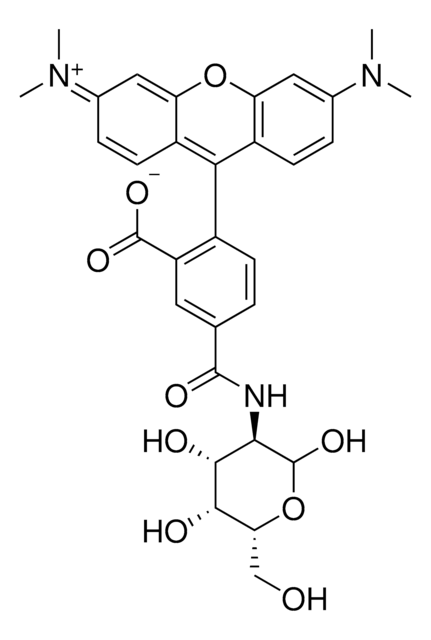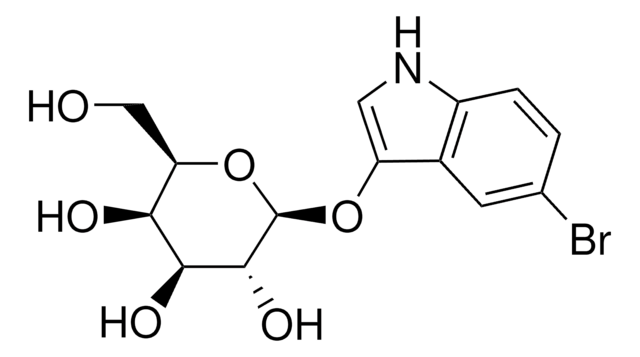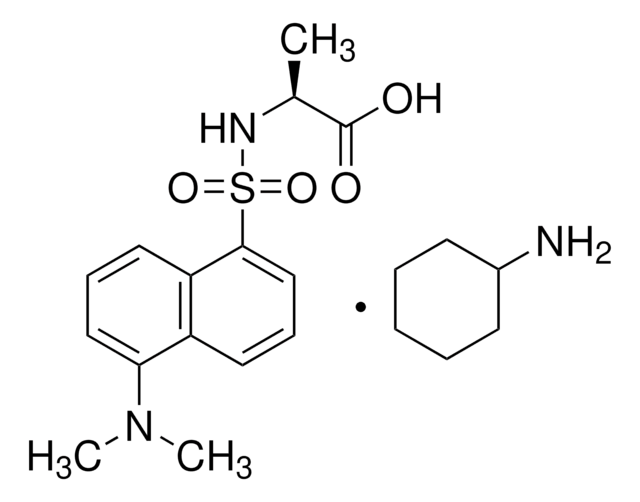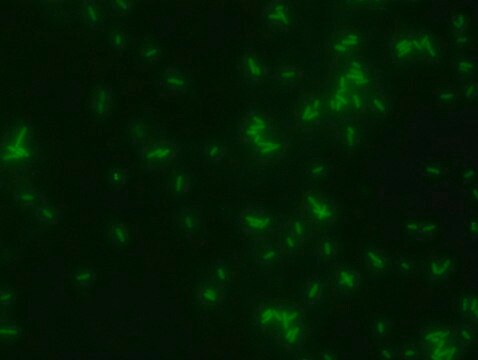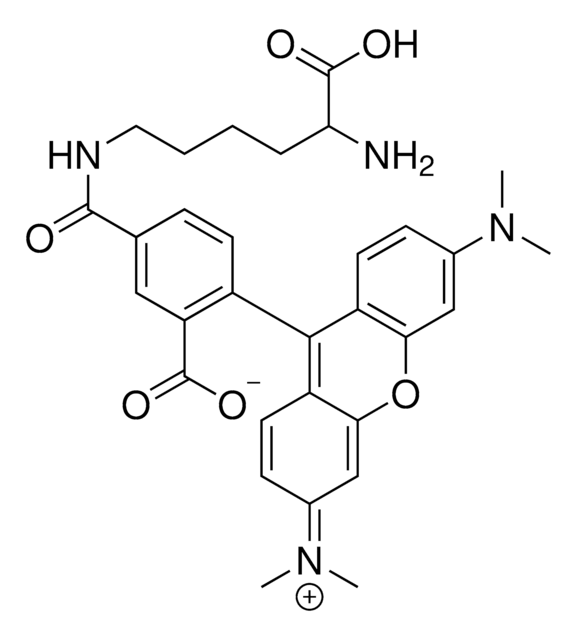SBR00070
Coumarin Labeled D-Lysine
Suitable for fluorescent microbial imaging
Sinónimos:
D-Lysine blue, D-Lysine, N6-[(7-hydroxy-2-oxo-2H-1-benzopyran-3-yl)carbonyl]- (ACI), FDAA
About This Item
Productos recomendados
Quality Level
form
solid
storage temp.
−20°C
SMILES string
O=C(NCCCC[C@@H](N)C(O)=O)C1=CC2=CC=C(O)C=C2OC1=O
InChI
1S/C16H18N2O6/c17-12(15(21)22)3-1-2-6-18-14(20)11-7-9-4-5-10(19)8-13(9)24-16(11)23/h4-5,7-8,12,19H,1-3,6,17H2,(H,18,20)(H,21,22)/t12-/m1/s1
InChI key
QYOUXTJCRWPQLR-GFCCVEGCSA-N
General description
Application
- Bacterial cell wall morphology
- Bacterial cell wall formation or remodeling activity
- Bacterial viability/activity
- Identify bacterial activity on surfaces or in substances
- Differentiation between various bacterial strains according to their incorporation profile of different D amino acids and sugars
Analysis Note
- Fluorescent microscopyapplication: Coumarin Labeled D-lysine has excitation/emission wavelength rangeat 360/450 nm.
- The recommended working concentrationin fluorescent microscopy imaging application is between 250µM-500 µM inworking medium
- Aliquots of the DMSO solution can bestored at -20 ⁰C, protected from light for at least one month.
Related product
Storage Class
11 - Combustible Solids
wgk_germany
WGK 3
flash_point_f
Not applicable
flash_point_c
Not applicable
Certificados de análisis (COA)
Busque Certificados de análisis (COA) introduciendo el número de lote del producto. Los números de lote se encuentran en la etiqueta del producto después de las palabras «Lot» o «Batch»
¿Ya tiene este producto?
Encuentre la documentación para los productos que ha comprado recientemente en la Biblioteca de documentos.
Nuestro equipo de científicos tiene experiencia en todas las áreas de investigación: Ciencias de la vida, Ciencia de los materiales, Síntesis química, Cromatografía, Analítica y muchas otras.
Póngase en contacto con el Servicio técnico
